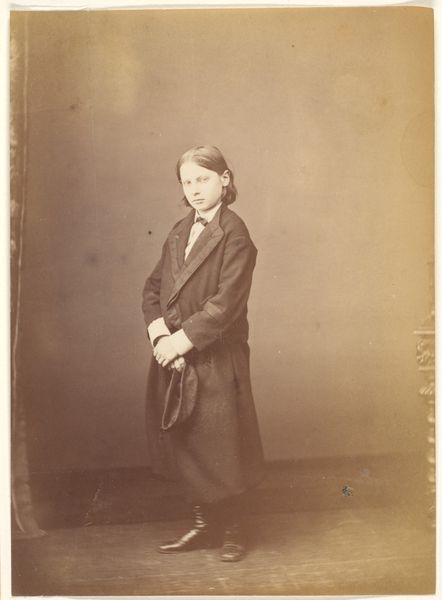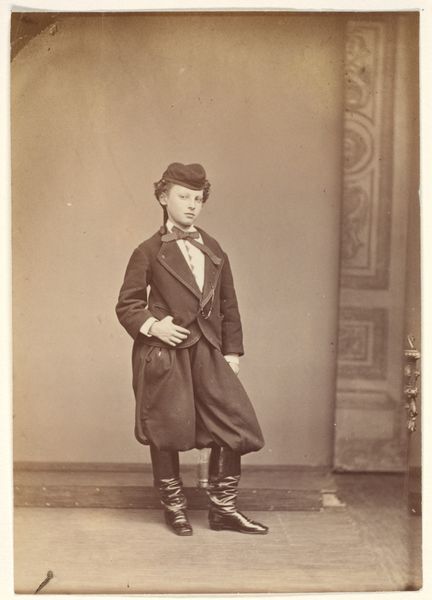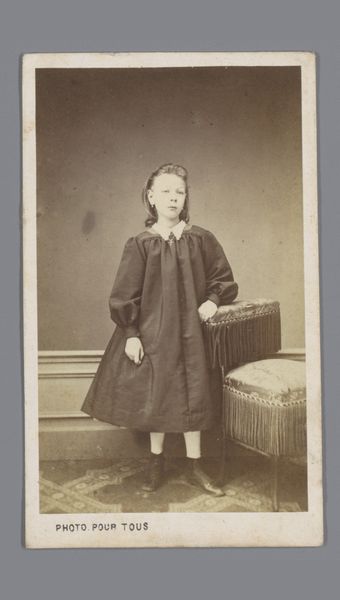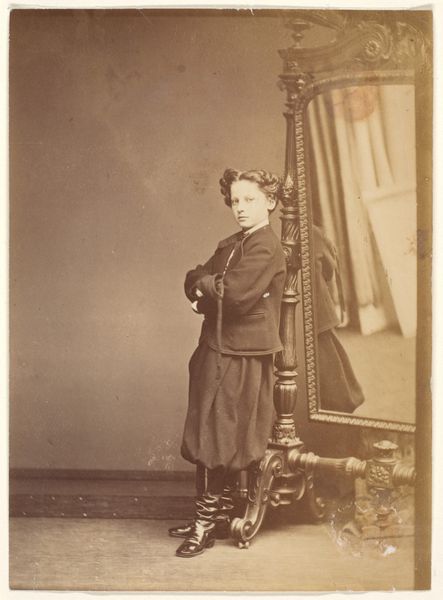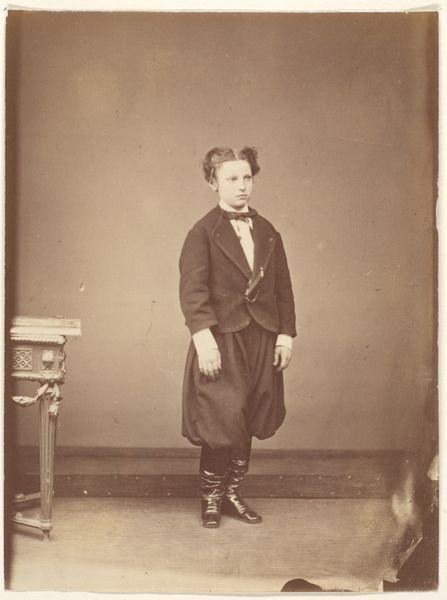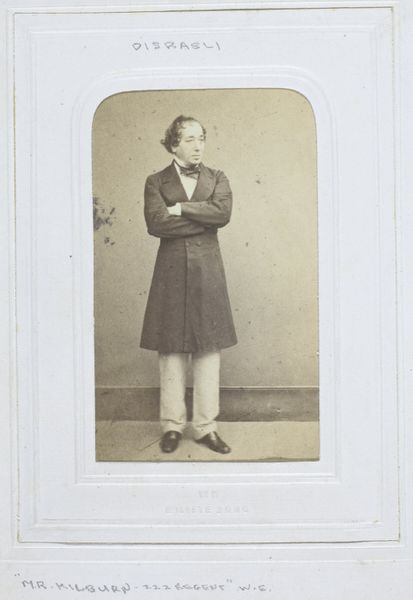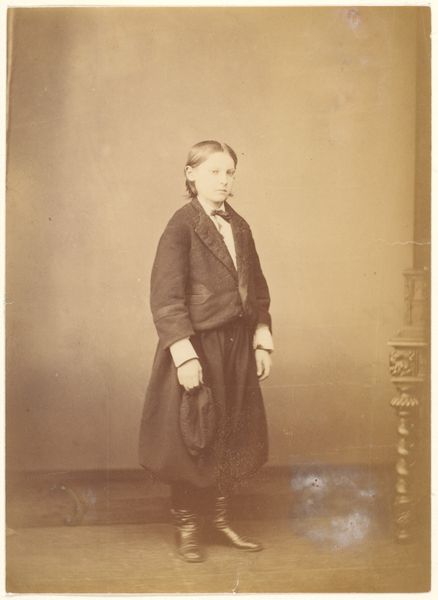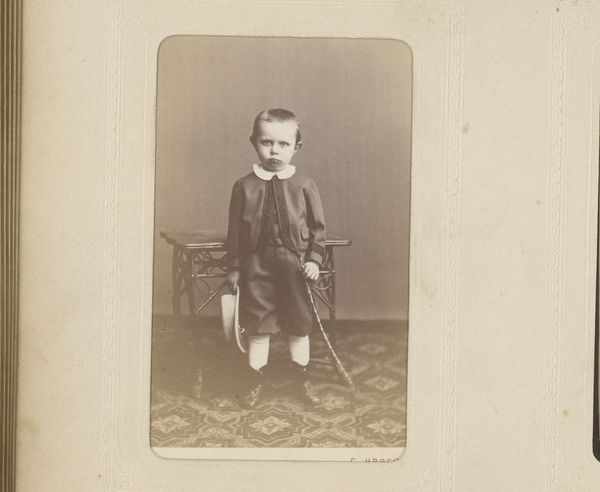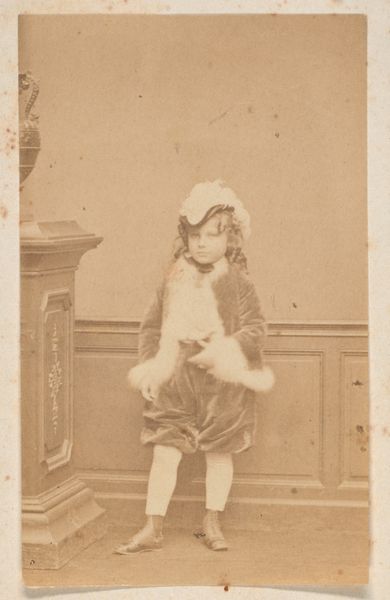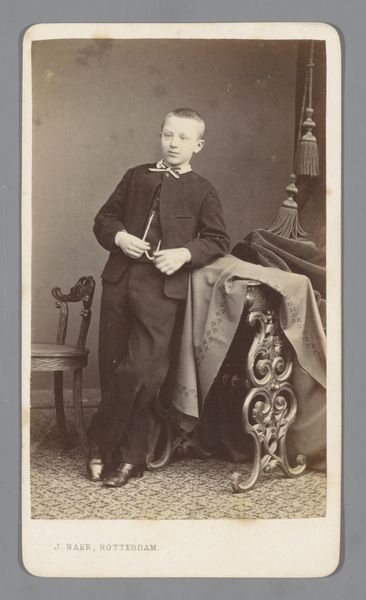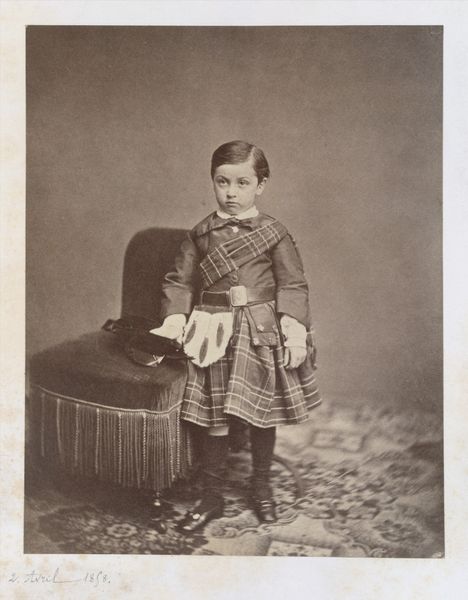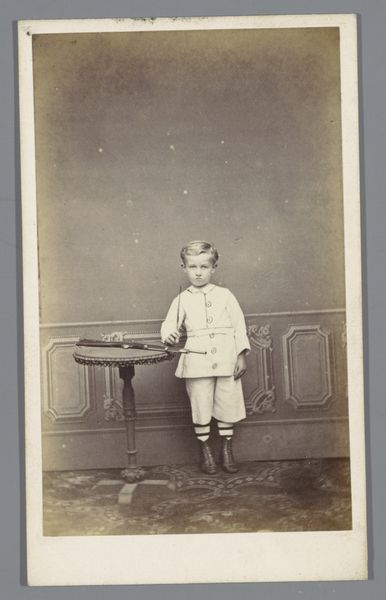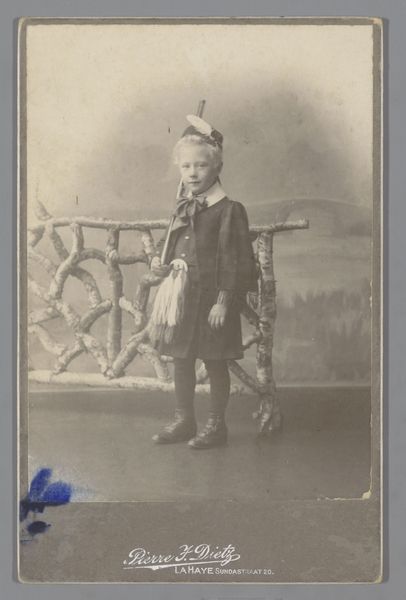
daguerreotype, photography, gelatin-silver-print
#
portrait
#
daguerreotype
#
archive photography
#
photography
#
historical photography
#
portrait reference
#
child
#
gelatin-silver-print
#
19th century
Dimensions: 8.3 x 11.4 cm. (3 1/4 x 4 1/2 in.)
Copyright: Public Domain
Curator: Here we have Pierre-Louis Pierson's photograph "Le petit Russe," dating back to the 1860s and captured using the daguerreotype process. Editor: The sepia tones immediately give it a weight of history. There's a melancholy, almost a theatrical stillness in the figure’s pose and expression that I find captivating. Curator: Indeed. Let's consider the material presence of the daguerreotype itself. The silvered copper plate, treated with chemicals and exposed to light, gives the image a remarkable clarity. The sheen and almost jewel-like quality certainly amplify the child's rather formal presentation. The way light interacts with the silver, it is quite captivating. Editor: The clothing also plays a significant role, I think. Those puffed trousers, combined with the jacket and boots, speak volumes about status and identity of childhood itself. The materials used, and their evident construction, must have represented significant expense and skill at the time. These boots weren't made for walking. It’s fascinating to consider the labor involved in crafting this image. Curator: Precisely, each element works within a defined structure, contributing to an overall semiotic tableau. The formal posture, set against a muted background, frames our attention entirely on the young subject. There’s an underlying rigidity; every component is perfectly composed. Editor: The photograph gives the impression that there was a clear purpose or patron here. From a materialist standpoint, I am intrigued by the photograph's origin and its movement to the Met’s collection, how has the meaning changed along with it? Who commissioned the piece? Was this simply for the family, or something more ambitious? Curator: These inquiries introduce relevant contextual information to the experience of observing, especially from a historic point of view. In terms of compositional elements and what makes "Le Petit Russe" distinct, for me, it's how it freezes a moment with an attention to detail unlike paintings. Editor: Yes, understanding how photographs, particularly portraits, became part of material culture in the 19th century reshapes how we look at them. Considering both the image itself and the process through which it came to be gives a fuller appreciation, I think.
Comments
No comments
Be the first to comment and join the conversation on the ultimate creative platform.
